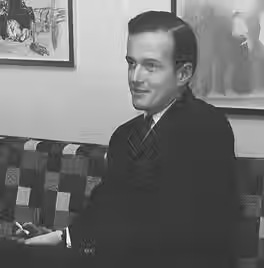Dana Suesse
- Corte Swearingen
- Apr 27, 2019
- 3 min read
Updated: Oct 7, 2025

Dana Suesse (pronounced Sweese) enjoyed considerable celebrity as a composer in the 1930s and 1940s, but today her name is not well known. A musical prodigy, she was born in 1909 in Kansas City, Missouri, and given classical music training at a young age. She composed her first song and gave her first piano concert at age eight. At age ten, she won a prize for composition from the National Federation of Music.
In 1926, Dana and her mother traveled to New York to advance her studies with the great piano teacher Alexander Siloti (at that time one of the four surviving pupils of Franz Liszt), and Rubin Goldmark, a former teacher of George Gershwin. In New York, Dana began experimenting with the new jazz idiom. She told an interviewer, "I just kept my ears open and began to understand that there was something very interesting called jazz and popular music. This was an unknown territory to me...I compromised and used my classical training to make a bridge between [classical] and what was new to me."
She was the only American composer other than George Gershwin to be invited to perform on the now legendary General Motors Symphony concert series of nationwide broadcasts. It wasn't long after that the press began to refer to her as "The Girl Gershwin."
She moved to Paris to study with Nadia Boulanger for three years, composing canons, string quartets, rondos, analyzing Beethoven sonatas and re-learning orchestration. After her return to the States, Dana was fascinated with the new progressive jazz sounds created by such pianists as Cy Coleman, Marian McPartland, and Billy Taylor. Frederick Fennell, conductor of the Eastman School of Music, heard about her Concerto in Rhythm (later called Jazz Concerto In D Major for Combo and Orchestra), and requested she play it for him on the piano, after which he insisted he be the first to conduct it. Before an audience of two thousand, Suesse played the solo part as Fennell conducted the Rochester Civic Orchestra on Saturday night, March 31, 1956.
Suesse managed to become financially independent at a fairly young age, an impressive feat for any woman in those times, but especially for a serious composer. In 1974, she was honored with a concert of her works at Carnegie Hall, where she performed part of her Concerto in Three Rhythms. Suesse was widowed in 1981 and retired, at age 70, in New York. She was still composing at the time of her death at age 77 on October 16th, 1987.
"People will appreciate my music after I'm dead."
- Dana Suesse
Selected Performances
Berceuse (published in 1975) - While Suesse was much more known for her jazzy pianistic compositions, here is a lovely little gem that showcases her more lyrical writing. This piece shares a lot of similarities with Erik Satie's Gymnopedie No. 1.
Swamp-Bird (1941) - Swamp-Bird is a very unique piece written by Suesse in 1941. It requires a bit of finger dexterity, but is well worth the time to learn!
Midnight in Gramercy Square (1941) - Midnight in Gramercy Square is a lovely little minuet written by Suesse in 1941. Suesse lived in New York at the time, so the Square referenced is most likely an area around the current Gramercy Park in Manhattan. It takes a bit of time to master all the trills in this piece, but is definitely worth it!
Locating the Music
The best published source I've found is the folio titled Dana Suesse - Jazz Nocturne. There is also a website called Rare Piano Scores that has a section for Dana Suesse. Once purchased, the music can be downloaded immediately in PDF format.
List of Piano Compositions
Syncopated Love Song (1930)
Jazz Nocturne (1931)
Blue Moonlight (1935)
Rockette (1937)
Afternoon Of A Black Faun (1938)
American Nocturne (1939)
110th Street Rhumba (1941)
Serenade To A Skyscraper (1941)
At The Fountain (1941)
Midnight In Gramercy Square (1941)
Swamp-Bird (1941)
The Cocktail Suite (1942)
I. Old-Fashioned
II. Champagne
III. Bacardi
IV. Manhattan
Night Sky (1947)
Scherzette (1956)
Berceuse (1975)


